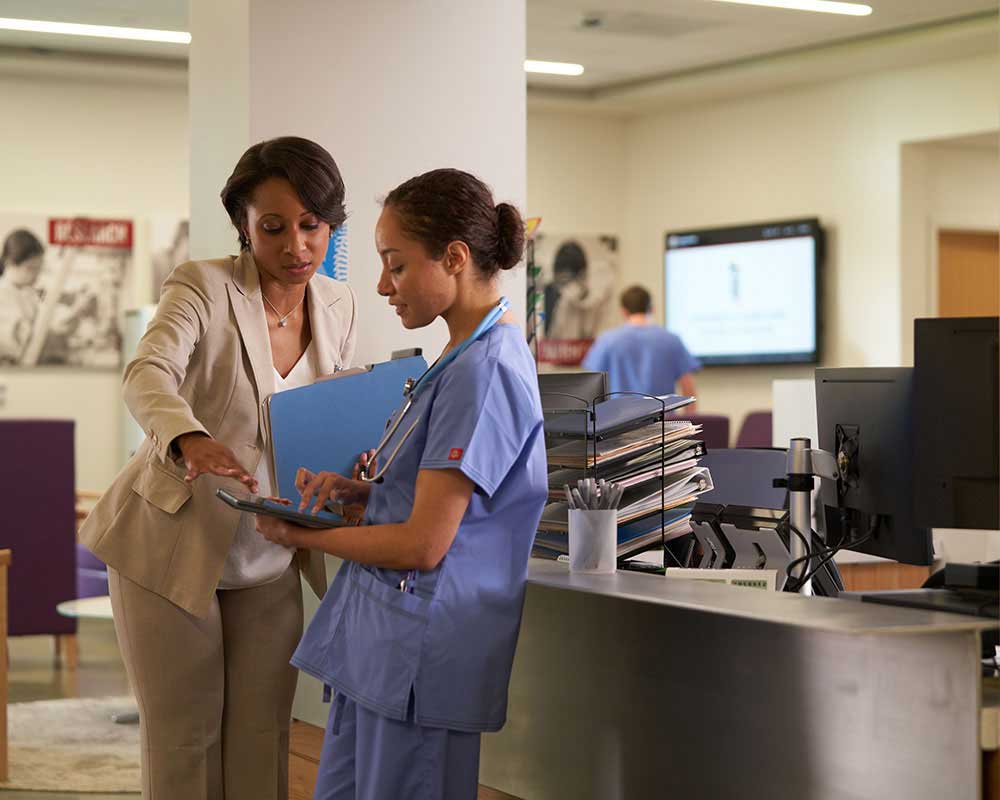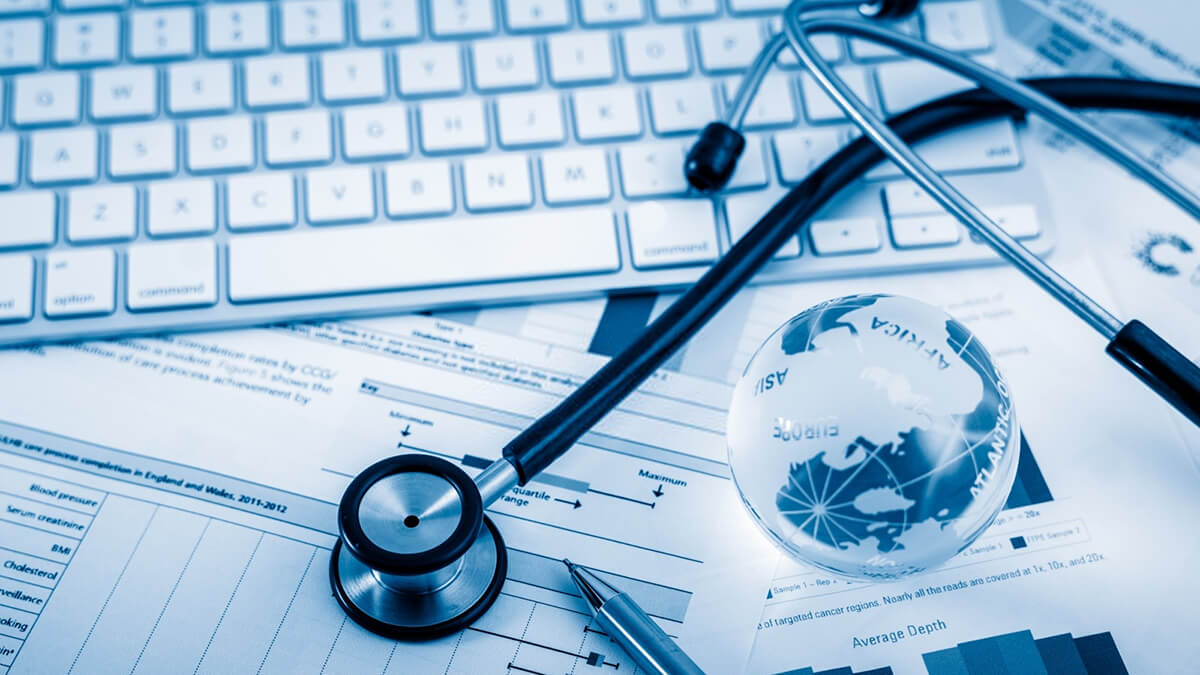How to Start an Effective Job in Medical Administration: A Newbie's Overview
How to Start an Effective Job in Medical Administration: A Newbie's Overview
Blog Article
Ideal Practices in Medical Administration for Improving Performance and Minimizing Expenses
In the ever-evolving landscape of medical care, the quest of finest practices in clinical administration is extremely important for enhancing effectiveness and curbing expenses. By integrating innovative modern technologies such as digital health and wellness records and telemedicine, doctor can streamline operations and enhance person treatment. Nevertheless, innovation alone is not a panacea; enhancing source allowance and promoting collective communication among treatment teams are just as essential (medical administration). As organizations aim to stabilize quality and expense, what methods should be focused on to accomplish these twin goals? The solution to these concerns hold the key to a much more lasting healthcare system.
Leveraging Advanced Modern Technology
In today's rapidly progressing healthcare landscape, leveraging advanced modern technology is no much longer optional but necessary for effective clinical administration. The integration of electronic remedies right into healthcare systems has transformed the means facilities run, enhancing processes and improving patient treatment. Electronic Health Records (EHRs) are crucial, supplying thorough person information that can be accessed promptly by authorized personnel, therefore minimizing redundancy and minimizing mistakes. By streamlining patient details, EHRs eliminate the demand for difficult paperwork and facilitate seamless interaction amongst doctor.
Telemedicine is one more technological innovation that has changed individual communication. It offers convenience for both people and healthcare professionals by making it possible for remote consultations, which can lower the demand for in-person brows through and optimize consultation organizing. Furthermore, telehealth platforms can expand medical care accessibility to country or underserved locations, linking gaps in care delivery.
Furthermore, making use of Expert system (AI) and equipment discovering is ending up being significantly prevalent in anticipating analytics, allowing for very early detection of potential health concerns and even more informed decision-making. These modern technologies, when integrated effectively, can improve diagnostic accuracy and individualize client treatment plans, eventually bring about enhanced healthcare outcomes and functional efficiency.
Optimizing Resource Appropriation
By tactically handling resources such as personnel, equipment, and financial resources, healthcare centers can considerably enhance their operational performance, enhance patient results, and reduce unneeded expenses. The first step in optimizing source allotment entails carrying out a detailed analysis of existing properties and determining areas where sources might be underutilized or exhausted.
Focusing on source appropriation based upon person requirements and service demands is important. This involves lining up sources with high-demand locations, such as emergency care or specialized treatments, to make certain prompt and effective individual care. Applying flexible staffing models can additionally optimize labor resources by changing workers appropriation in action to varying person quantities. Furthermore, welcoming telemedicine and various other technical services can relieve physical source restrictions by using different methods for patient-provider interactions.
Funds need to be thoroughly kept an eye on and allocated with tactical insight to sustain both temporary functional requirements and long-lasting institutional goals. This consists of investing in training programs that enhance staff competencies and taking on energy-efficient practices that minimize functional costs (medical administration). Eventually, a maximized source allowance method cultivates a lasting health care environment that is responsive, effective, and financially prudent
Streamlining Operations Processes
When medical care centers objective to improve functional performance, improving operations procedures comes to be a pivotal focus. Reliable process minimize redundancy, remove unnecessary steps, and enhance control among health care experts. This method not just speeds up service shipment but likewise boosts the high quality of client treatment.

Next, innovation combination plays a considerable function in streamlining process. Carrying out digital wellness documents (EHRs) and electronic doctor order entrance (CPOE) systems lowers documents, reduces human error, and guarantees information is obtainable to all appropriate employees. In addition, leveraging telemedicine platforms can enhance individual consultations and follow-ups, minimizing the stress on physical infrastructure.

Inevitably, streamlined operations result in cost reductions and improved person satisfaction, cultivating a much more lasting healthcare atmosphere.
Enhancing Data Management
Structure upon streamlined workflows, maximizing data management ends up being a crucial element in advancing healthcare management. Reliable information administration systems are vital for maintaining accurate person records, enhancing decision-making, and making sure conformity with governing criteria. By applying durable data management options, healthcare centers can improve the high quality of client care while all at once minimizing operational prices.
One secret element of enhancing information management is the assimilation of advanced digital wellness record (EHR) systems. These systems help with the smooth exchange of individual info throughout various departments, decreasing duplication of tests and minimizing mistakes. A well-designed EHR system sustains information analytics, allowing healthcare suppliers to determine fads and make notified decisions regarding patient treatment.
Furthermore, securing patient data is paramount. Embracing thorough cybersecurity procedures, including encryption and regular audits, makes sure the stability and confidentiality of sensitive info. This not only safeguards individuals but likewise preserves the organization's credibility.
Buying personnel training is another crucial element. Informing health care experts on information management practices enhances their capability to properly make use of modern technology, bring about boosted individual results. To conclude, boosting information management through innovative innovation and thorough training is vital for achieving effectiveness and price decrease in medical management.
Fostering Collaborative Interaction
A vital element beforehand clinical management is fostering collective communication among medical care experts. Reliable communication is critical for guaranteeing smooth individual treatment, maximizing therapy outcomes, and decreasing mistakes. By encouraging open dialogue and coordination throughout multidisciplinary teams, wikipedia reference healthcare organizations can enhance their operational effectiveness and reduce unnecessary prices.
Central to this approach is the assimilation of communication modern technologies such as electronic health and wellness documents (EHRs) and secure messaging systems, which promote the fast exchange of crucial patient details. These devices enable doctor to access and share information in real time, ensuring that all employee are educated and aligned in their decision-making processes. Additionally, routine team conferences and interdisciplinary rounds can further advertise a culture of cooperation and accountability.
Educating programs focused on boosting interaction skills are additionally necessary. Ultimately, fostering collaborative interaction leads to improved medical care this link shipment and price financial savings.

Conclusion
Including advanced technology, such as electronic health documents and telemedicine, together with maximized source appropriation and structured process processes, is vital for boosting performance in clinical administration. Reliable data administration and promoting joint interaction amongst health care teams are vital for minimizing redundancies and enhancing care quality. By prioritizing precautionary care and taking part in high quality enhancement efforts, healthcare companies you can try these out can attain substantial expense financial savings and enhanced individual results, consequently making sure sustainable medical care distribution in an increasingly complicated atmosphere.
Report this page